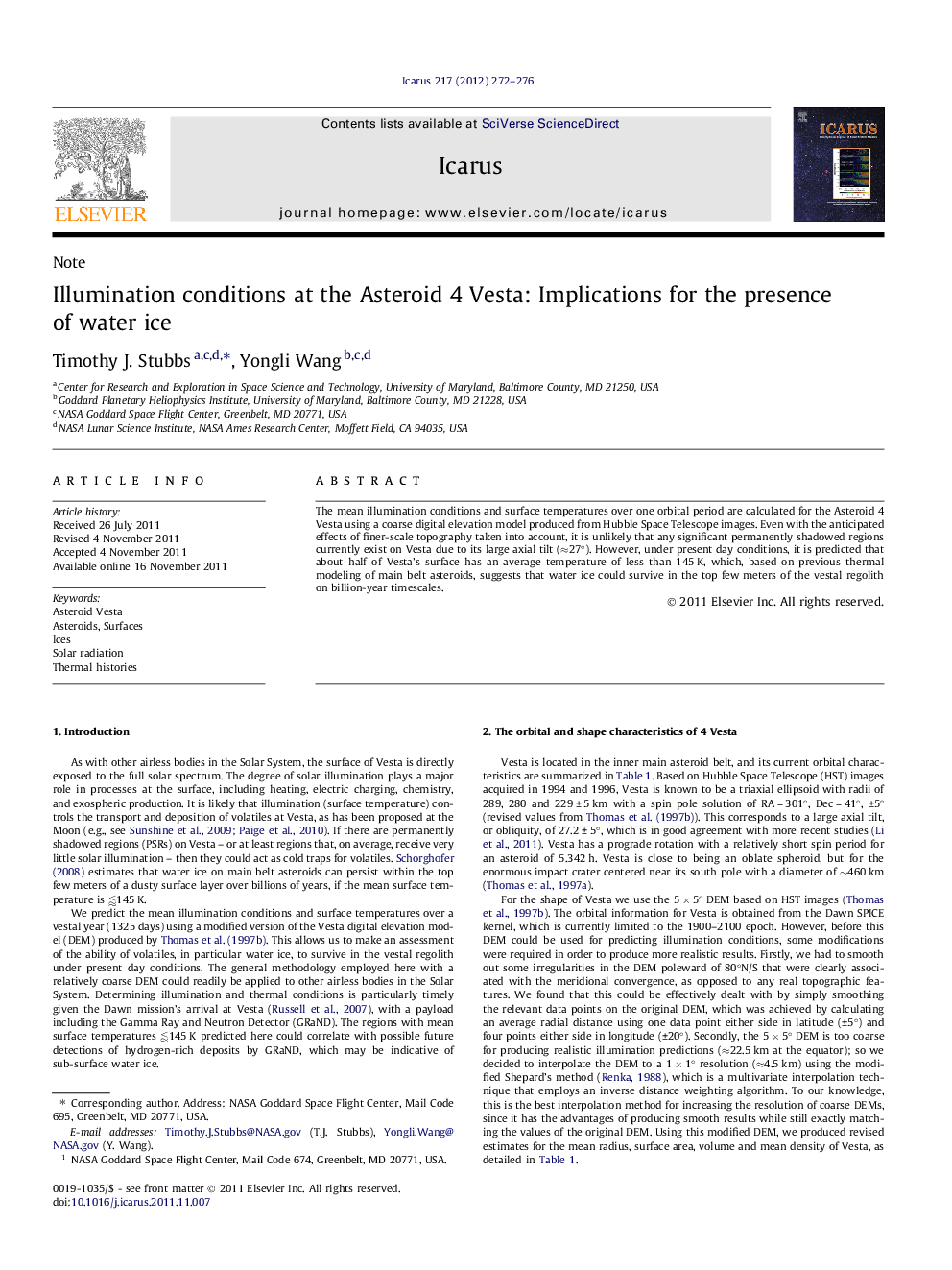| Article ID | Journal | Published Year | Pages | File Type |
|---|---|---|---|---|
| 1773916 | Icarus | 2012 | 5 Pages |
Abstract
The mean illumination conditions and surface temperatures over one orbital period are calculated for the Asteroid 4 Vesta using a coarse digital elevation model produced from Hubble Space Telescope images. Even with the anticipated effects of finer-scale topography taken into account, it is unlikely that any significant permanently shadowed regions currently exist on Vesta due to its large axial tilt (â27°). However, under present day conditions, it is predicted that about half of Vesta's surface has an average temperature of less than 145 K, which, based on previous thermal modeling of main belt asteroids, suggests that water ice could survive in the top few meters of the vestal regolith on billion-year timescales.
Related Topics
Physical Sciences and Engineering
Earth and Planetary Sciences
Space and Planetary Science
Authors
Timothy J. Stubbs, Yongli Wang,
